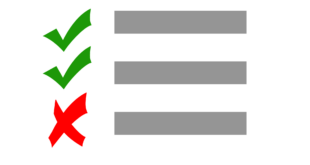Can You Meet the Challenge?
In each issue of Sprinkler Age, AFSA’s Engineering & Technical Services Department presents technical challenges. Besides testing yourself and your co-workers, these exercises are excellent preparation for professional certification tests and also may count as continuing education hours. Check with your certification organization to see if this exercise meets its criteria. For apprentice fitters, working these problems enforces lessons that should be learned through an apprenticeship program and explains how requirements from the standard are applied in the field.
AHJ Challenge
All questions are based on the 2019 edition of NFPA 20, Standard for the Installation of Stationary Pumps for Fire Protection.
- When testing variable speed pumps in variable speed mode, how many points must be recorded during the acceptance test?
A. 3
B. 7
C. 4
D. 5
Answer: B. Section 14.2.6.4.1 requires you to test at no flow, 25 percent, 50 percent, 75 percent, 100 percent, 125 percent, and 150 percent of rated load in variable speed mode.
2. NFPA 20 requires emergency lighting in all pump rooms, and the lighting shall work continuously for a minimum of how many hours?
A.8
B. 4
C. 2
D. 6
Answer: C. Section 4.14.5.4 requires the emergency lighting to maintain lighting for a minimum of two hours.
3. Self-regulating variable speed fire pumps are required to monitor the variable speed drive and provide a supervisory alarm signal to the controller when one of the following conditions occurs.
A. Sprinkler activation
B. Overpressure
C. Under pressure
D. Low temperature
Answer: B. Section 4.8.9 lists 10 items that are required to send a signal, and Overpressure is number (9)
4. Location and access to the fire pump equipment is required to be preplanned with whom?
A. Owner
B. Building Department
C. Fire Department
D. Water Authority
Answer: C. Section 5.2 requires preplanning with the local fire department as it is critical to fighting a fire successfully in high-rise buildings.
Designer Challenge
The following questions are based on the 2019 edition of NFPA 20.
- Which of the following terms describes a building where the system demand exceeds the pumping capacity of the fire department?
A. High-rise building
B. Super high-rise building
C. Very tall building
D. High-demand building
Answer: C. 3.3.79 Very Tall Building. A high-rise building where the fire protection water demand exceeds the pumping capacity of the fire department.
2. What nominal size automatic relief valve is required to be installed on an electric drive fire pump with a rated capacity of 2,500 gpm?
A. 0.75 in.
B. 1 in.
C. 6 in.
D. 10 in.
Answer: A. 4.13.1.7 The automatic relief valve shall have a nominal size of 0.75 in. (19 mm) for pumps with a rated capacity not exceeding 2500 gpm (9462 L/min) and have a nominal size of 1 in. (25 mm) for pumps with a rated capacity of 3000 gpm to 5000 gpm (11,355 L/min to 18,925 L/min).
3. What is the maximum number of variable speed pumps permitted to be installed in A series?
A. 1
B. 2
C. 3
D. 4
Answer: B. 4.21.2.4 No more than two variable speed pumps shall be allowed to operate in series as a part of a series fire pump unit.
4. For a diesel engine drive, which of the following is used to determine the minimum size of the fuel tank?
A. 1 gal per hp
B. 1 gal per hp, plus 5 percent for sump and expansion
C. 1 gal per hp, plus 5 percent for sump, plus 5 percent for expansion
D. Listed fuel supply rate times 8 hours
Answer: 11.4.1.3.1* Fuel supply tank(s) shall have a capacity at least equal to 1 gal per hp (5.07 L per kW), plus 5 percent volume for expansion and 5 percent volume for sump.
In the 2022 edition, the capacity of the fuel tank will be determined by multiplying the fuel consumption rate by a 12-hour run time. Where the fuel consumption rate of a diesel motor is unknown, the 1 gal per hp plus 5 percent for expansion and 5 percent for sump is still acceptable.
Fitter Challenge
The following questions are based on the 2019 edition of NFPA 20.
- True or False: A ball valve shall be installed ahead of the pressure switch within the controller for a fire pump sensing line, for isolation/maintenance.
Answer: False. NFPA 20-2019, section 4.13.1.3, The valve shall be installed on the discharge side of the pump before the discharge check valve.”
2. Yes or No: An existing circulation relief drain needs to be repaired. The client wants you to tie the repaired 3/4-in. relief drain into the packing box drain. Is this allowed?
3. Answer: No. NFPA 20-2019, section 4.13.1.6, Circulation relief valves shall not be tied in with the packing box or drip rim drains.” The circulation relief valve must have a dedicated line.
4. True or False: The installation of Polyvinyl Chloride (PVC) within the packing box drain is permitted when discharging to a floor drain.
Answer: True. NFPA 20-2019, section 4.15.5, Drain pipe and its fittings that discharge to atmosphere shall be permitted to be constructed of metallic or polymeric materials.” PVC is a polymeric material and can be used for floor drains.
Yes or No: The gate valve located 10 ft from the pump suction flange needs to be replaced. The client would like it replaced with a butterfly valve that they have on hand. Is this allowed?
Answer: No. NFPA 20-2019, section 4.16.5.4 “No control valve other than a listed OS&Y valve and the devices as permitted in 4.29.3 shall be installed in the suction pipe within 50 ft (15.3 m) of the pump suction flange.”
ITM Challenge
All answers are based on NFPA 25, Standard for the Inspection, Testing, and Maintenance of Water-Based Fire Protection Systems, 2020 edition.
- Lubricating oil filters shall be changed every year or at what other frequency?
A. 3,500 miles
B. 7,000 miles
C. 50 hours
D. 25 hours
Answer: C. NFPA 25-2020 section 8.1.1.2.18 “Lubricating oil filters shall be changed every 50 hours of operation or annually.”
2. What shall be conducted following a fire pump flow test that resulted in the discharge of gravel?
A. Main Drain Test
B. Dry Valve Trip Test
C. Obstruction Investigation
D. Fire Pump Flow Test
Answer: C. NFPA 25-2020 section 14.3.1 “An obstruction investigation shall be conducted for system or yard main piping wherever any of the following conditions exist:
(1) Defective intake for fire pumps taking suction from open bodies of water
(2) The discharge of obstructive material during routine water tests
(3) Foreign materials in fire pumps, in dry pipe valves, or in check valves
(4) Foreign material in water during drain tests or plugging of inspector’s test connection(s)
(5) Unknown materials are heard in the system piping during draining, refilling, otherwise flowing water through the system
(6) Plugged sprinklers
(7) The presence of sufficient foreign organic or inorganic material is found in the pipe
(8) Failure to flush yard piping or surrounding public mains following new installations or repairs
(9) A record of broken public mains in the vicinity
(10) Abnormally frequent false tripping of a dry pipe valve(s)
(11) A system that is returned to service after an extended shutdown (greater than 1 year)
(12) There is reason to believe that the sprinkler system contains sodium silicate or highly corrosive fluxes in copper systems
(13) A system has been supplied with raw water via the fire department connection
(14) Pinhole leaks
(15) A 50 percent increase in the time it takes water to travel to the inspector’s test connection from the time the valve trips during a full flow trip test of a dry pipe sprinkler system when compared to the original system acceptance test.”
3. How shall a fire pump be started during a no-flow test?
A. Pushing the “start” button
B. Pushing the “emergency” switch
C. Automatically
D. Other manual means
Answer: C. NFPA 25-2020 section 8.3.2 “No-Flow Test. 8.3.2.2 The test shall be conducted by starting the pump automatically.”
4. A complete written report of the fire pump test results shall be prepared for and retained by whom?
A. Owner
B. Contractor
C. Insurance Representative
D. Authority Having Jurisdiction
Answer: A. NFPA 25-2020 section 8.4.1“A complete written report of the fire pump test results shall be prepared for and retained by the owner.”
Want to Participate?
You can take part in future technical challenges! Look for the September/October 2021 issue of Sprinkler Age hitting your mailbox and online in mid-September! Questions will appear in that issue and answers will be posted online. Test your knowledge today and you might just win some industry swag!
 Sprinkler Age A Publication of the American Fire Sprinkler Association
Sprinkler Age A Publication of the American Fire Sprinkler Association

